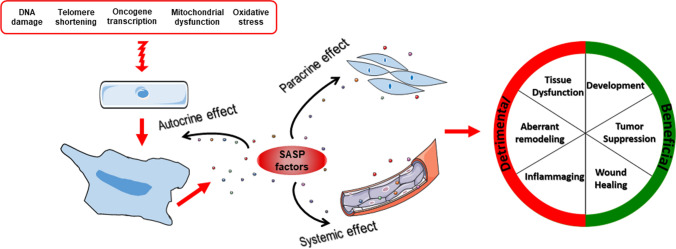Fig. 2.
Inducers and features of senescence. DNA damage, telomere shortening, oncogene activation, oxidative stress and mitochondrial dysfunction are the major inducers of senescence. Senescent cells exhibit a series of distinct biochemical and morphological hallmarks that discriminate them from normal cells including enlarged nuclei and flattened cytoplasm. Senescent cells are also able to produce the so-called senescence-associated secretory phenotype (SASP) factors that include inflammatory molecules, extracellular matrix remodeling enzymes and growth factors. Overall, SASP molecules spread and boost senescence in a paracrine manner on surrounding cells leading to tissue dysfunction and aberrant remodeling, and by entering into the blood stream contribute to inflammaging. Cellular senescence may also elicit beneficial effects particularly evident during embryonic development, tumor suppression and tissue repair

